Do biological controls work in controlled environment agriculture?
Indoor growers, while they do have a higher degree of exclusion than outdoor growers, cannot avoid pests getting into their farms.
Insects and disease will find their way in under doors and windows, through fans, and in the water.
Because most indoor growing environments share similar traits—they run in the same temperature range, stay fairly dry, and have ventilation—indoor growers across the world will deal with roughly the same pests.
Most indoor growers struggle with pests like aphids, whiteflies, and spider mites (among others). If they’ve done their homework, they know that it will take a combination of controls to manage a pest population.
This well-rounded approach is called integrated pest management (IPM), and it depends on the marriage of several types of controls. These include mechanical controls like hand picking insects off plants, chemical controls like spraying a pesticide, cultural controls like removing places that an insect uses to pupate.
Read more: Integrated pest management
Challenges of biological controls in CEA
Another type of control is biological control. Biological control is the use of natural predators or parasites (“biocontrols”) to manage a pest, and it is an essential tool for farmers. The farmers release the insect (or fungus, bacteria, etc.), and it finds its target on the farm—usually in abundance.
Controlled environment agriculture (CEA) with its unique lighting and setup, poses a few unique challenges to biological controls.
The biggest challenge is the difference in light. Outside, the sun is always above the plants and has a wide spectrum of light. Many insects depend on this source of light to navigate, find prey, and even cue certain lifecycle stages.
When that guiding force is oriented differently and uses only a small part of the spectrum that the sun does, it can cause disorientation in insects.
With a bit of tweaking, however, there are still some great ways to use biocontrols in indoor environments. We’re going to use the classic example (and also one of the most useful for farmers) of biological control: the ladybug.
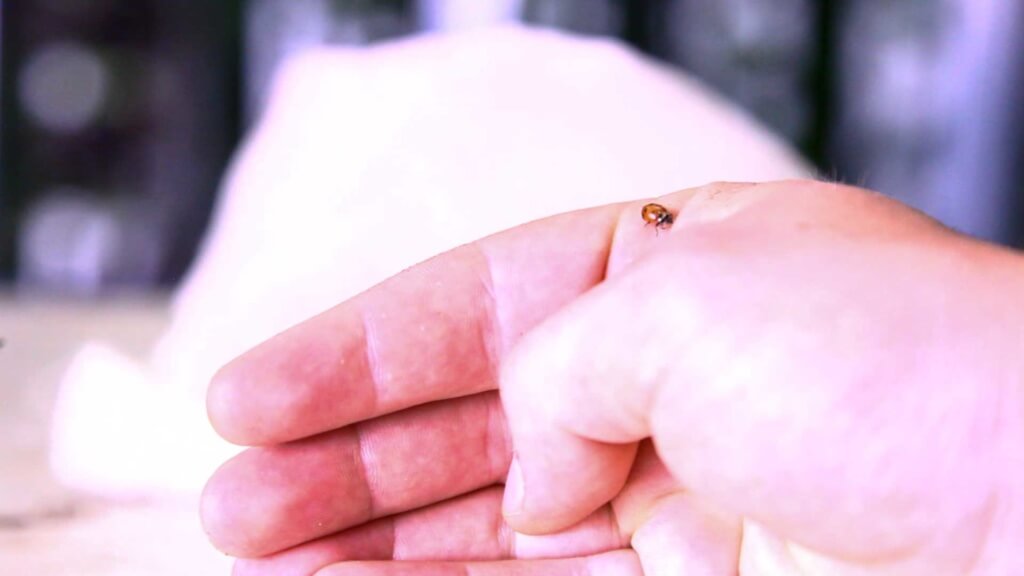
Using ladybugs for pest control in indoor farms
Ladybugs, or Lady Bird Beetles, are one of the most common beneficial insects used in gardens and farms, and the biocontrol that we use most often on our own farm.
Ladybugs are a natural predator of pests like aphids and thrips. We use them liberally for aphid control. Both the adults and the larvae find and devour aphids, but the adults don’t have a very big appetite, so growers need to use more adults to achieve the same level of control as they would if using larvae.
Where can you find ladybugs?
Ladybugs come (usually as adults) by the hundred or thousand, typically packed with some packing straw in a linen bag.
We order our ladybugs from Hydro-gardens, though many companies sell the insects.
We prefer getting them from sellers like Hydro-gardens because they raise the insects in bulk, and the buyer can be sure that he (or she) is getting them fresh.
There are several thousand different species of ladybug, and not all of them share an appetite. Some even eat plants rather than other plant-eating insects, so by ordering from a reliable source, you’ll be sure to get the right species.
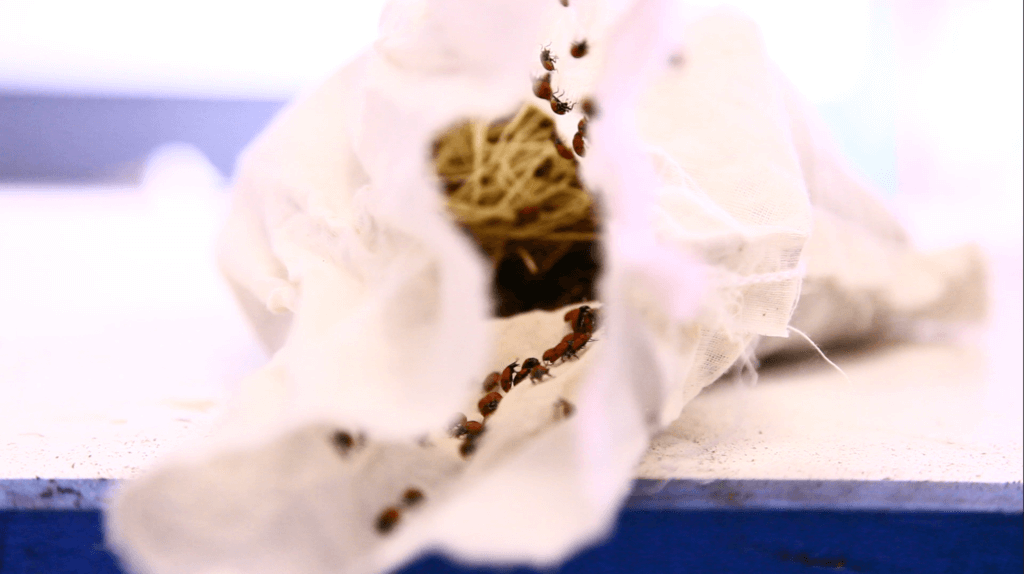
Using ladybugs effectively to properly control pests
Most insects slow way down when cold, and can be stored in a cold place for a long time. Since ladybugs will store for months (with a little die-off) in a fridge, we usually order a bag but only release a portion of the bag at a time.
Releasing the insects is where a little modification is in order. In an outdoor garden or greenhouse, ladybugs must be released in the evening soon after a watering.
In an indoor farm—likely run with hydroponics or aquaponics and using artificial lighting—the evening and water rule aren’t necessarily true, but farmers still have to learn how to use ladybugs correctly and pay attention to how they release the beetles.
For instance: if we release the adult ladybugs directly into the warehouse farm (where we have ZipGrow Towers set up with vertical light bars running red and blue light), they grow disoriented and only a small number of them actually end up on the foliage. The rest fly to the walls or clump in masses.
To keep this from happening, we release the flying form (adults) in a contained area. This not only keeps them where they should be but in higher concentration—important for the adults, which eat fewer aphids than larvae.
The best place to do this is your seedling cart. The cart is easy to contain with a vinyl covering, and it’s where aphids can do especially bad damage. The plants are dense and it’s easy for aphids to move from one plant to another.
It’s like an all-you-can-eat buffet, with the food lined up in rows for the taking.
The point is: the seedling cart is an aphid’s paradise and you should let your ladybugs have a little fun too!
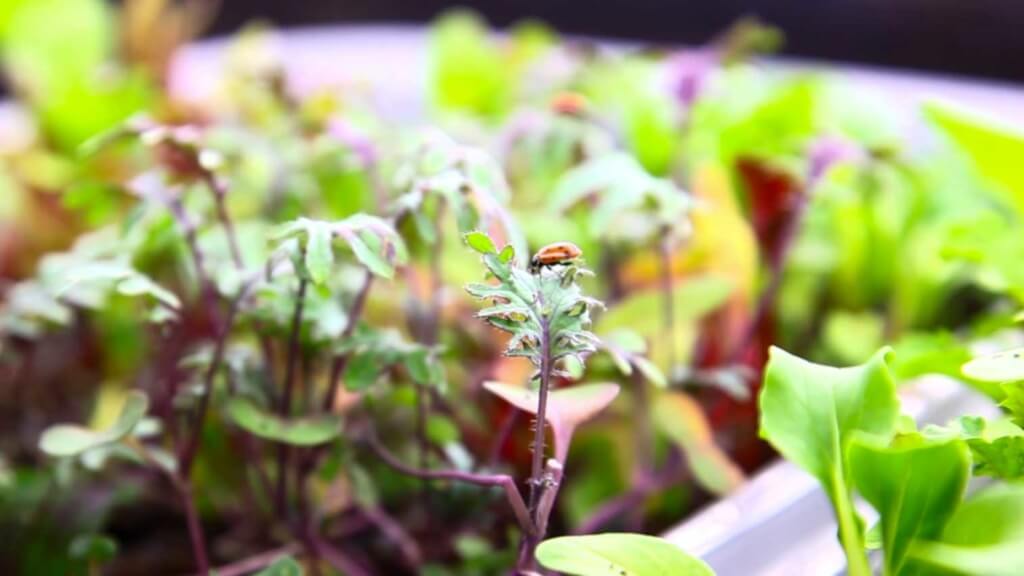
To utilize ladybugs in our farm, we contained the seedling cart with a vinyl cover, turned off most of the lights, and released the adult ladybugs inside. They took care of the aphids in the cart, mated, and laid eggs.
By the time the seedlings were being transplanted into the main farm, they were crawling with flightless ladybug larvae.
And if you remember, those growing larvae are even more voracious than the adults. Because they can’t fly, they have to stay on the foliage (or very close).
Problem solved.
To recap, controlled environment growers should follow these steps when releasing ladybugs on their indoor farm:
- Create a contained environment (preferably around seedlings) and keep lighting low.
- Release adults into the contained area and let them lay eggs.
- Store the extras in the fridge.
- Transplant seedlings—thus moving larvae—into main farm area.
Want a pest control primer?
Upstart University students can learn more about the principles of insect pest management in the Insect Pest Management Course!
Not an Upstart University student? Get registered today for only $9.99/month!

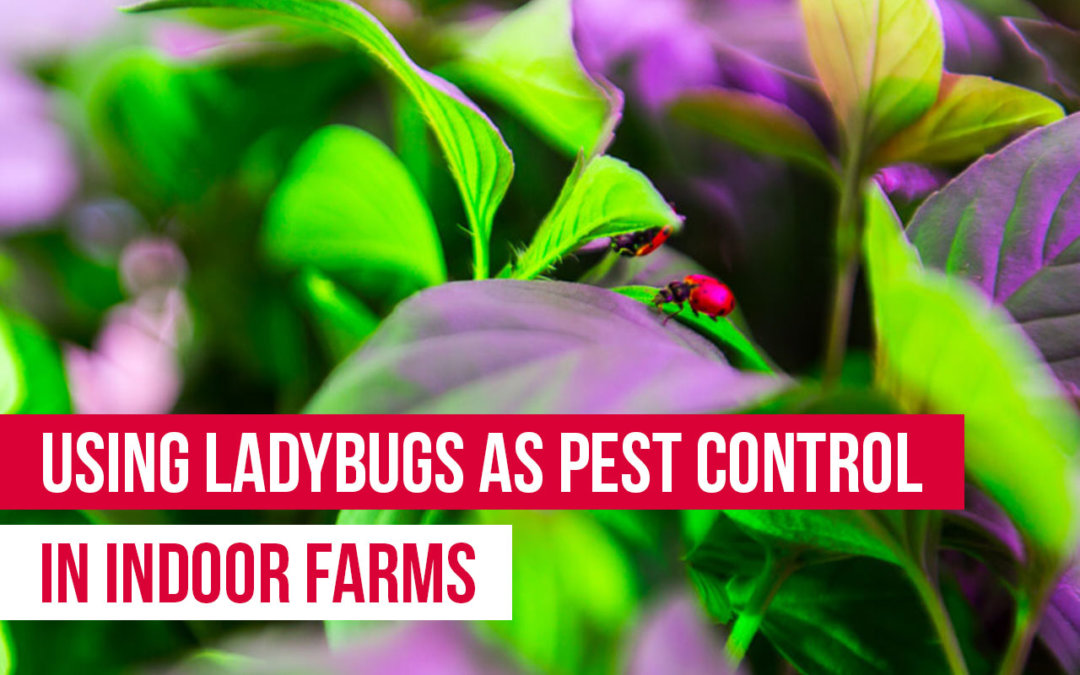
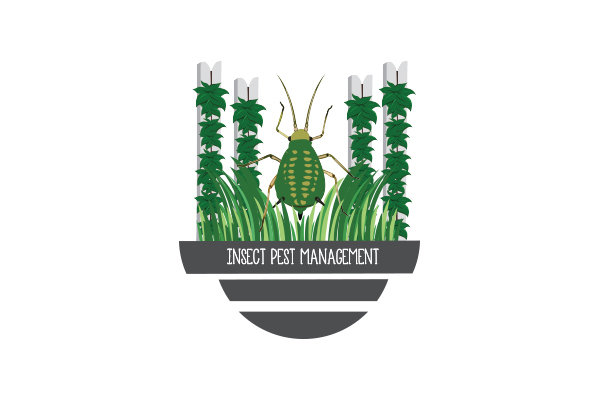

Spider mites too?
Yep!
Are you using the ladybugs on food products?
Hey Leanne, we use them to control pests on our produce, so yes.
Do the ladybug eat fruit flys?
Hi PW – not many. If you’re seeing fruit flies in your greenhouse, though, they’re probably fungus gnats, which you can treat with soil drenches, Spinosad (an over-the-counter pesticide), and of course getting rid of any wet debris or standing water in your greenhouse.
Awesome
I saw thrips mentioned in the article. Are lady bugs the best option, or green lace wings, or is there another big that is better? Will lay bugs eat lace wings?
Re: “turned off most of the lights” and “keep lighting low” — This seems counterproductive seedling growth. Can you provide some detail? For example, How long and at what repeat frequency (if any) do you keep seedling lights off/low? Exactly what do you mean by “low”? On a related topic, How long does it typically take for lady bugs to lay eggs? Thanks in advance, -Joe
Hi Joe, good questions. Turning off about half the lights will usually be enough; you just don’t want to roast them in that enclosed space. You’ll want to give the ladybugs 1-2 days with low light to eat, mate, and lay eggs.
Hi there just curious about how you contained the ladybugs? Or did you just put them on specific plants with the vinyl cover?
Kim—
When using ladybugs in a sealed growing environment, it is best to allow them to have access to all plants, as they may find pests that you haven’t seen yet. In open environments, it is possible to use fine mesh netting to restrict them to certain areas.
How do I supply water to the lady bugs in a small sealed room? Do they lay eggs everywhere or only on plant leaves?
Thanks for the information.
Hi Ron!
The easy way is to lightly sprinkle water on the foliage they reside on. You can also put a damp paper towel down for them and keep it wet; they sill suck the moisture out of it. They lay eggs everywhere and seem to prefer hard surfaces like stems, wood, walls, etc.
How long do the ladybugs last. My Brother just purchased a bag of them and released them in a controlled contained environment
Hi Dwayne,
If everything goes as it should, the ladybugs should last until they fly away. There is a possibility that they could also drown.
Do you have to worry about ladybug poop? Also I bought a house Donte speak so they can stay. My room is 9×10. Also should I seal bottoms of doors and whatnot so they don’t escape? Thanks.